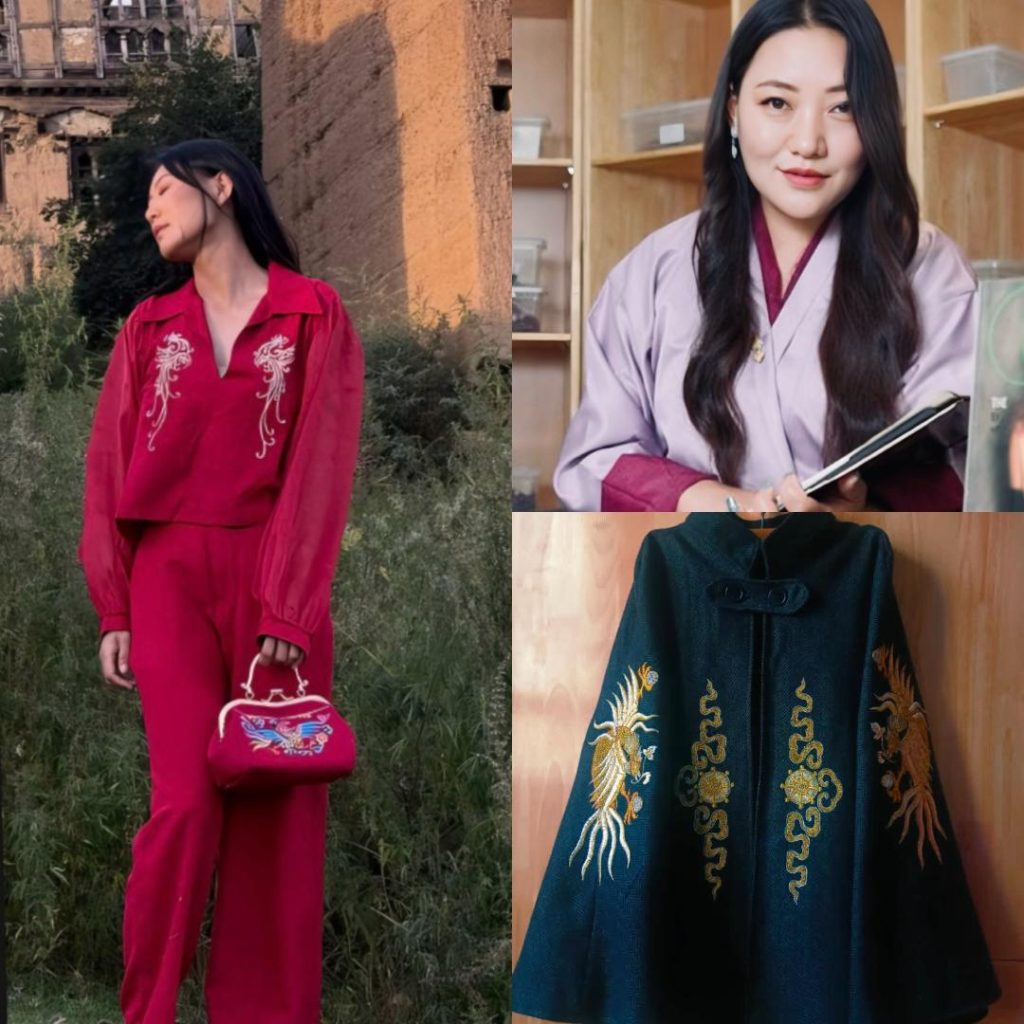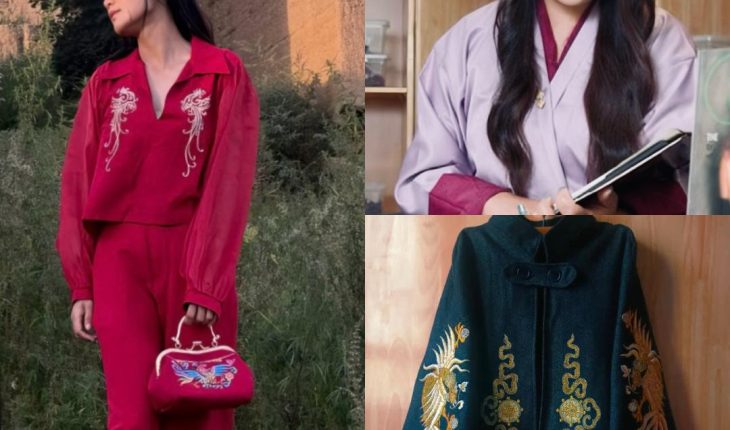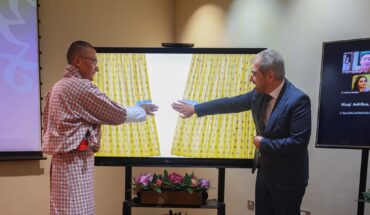
From struggle and self-learning, Chuni Dema stitches Bhutanese identity into modern designs
TIL BDR GHALLEY | Thimphu
In the slopes of Zhemgang, in the quiet village of Gomphu under Tong Gewog, a single mother once sat weaving sweaters to make ends meet.
With no formal education in design, no exposure to the fashion industry, and no idea how to even thread a sewing machine, her world seemed far removed from the glamour of fashion runways.
But today, 36-year-old single mother Chuni Dema is redefining what it means to dream.
“I had never touched a machine and didn’t know how to stitch,” she said, recalling her early days. “But I knew how to weave and net, so I thought maybe I could try.”
What began as necessity soon turned into passion. In 2019, Chuni collaborated with her friend Tshering Zam to establish a small fashion venture called Twinning Attire.
The duo started experimenting with creative designs, catching the attention of young Bhutanese eager for something new.
Recently, they rebranded the label as Druk Lokpa, giving it a more national identity as they step into Bhutan’s emerging fashion scene.
Chuni’s story is about persistence. At first, she only did what she knew—cutting fabric and weaving. She gave her pieces to others for stitching. But she soon realized this could not continue.
“I realized I couldn’t depend on others forever. So, I saved and bought a machine,” she said. “I didn’t even know how to operate it. But I refused to give up.”
It was YouTube, not a classroom, that became her teacher. Night after night, after finishing her household chores and putting her child to bed, Chuni sat with her machine, replaying videos and mimicking every step she saw.
“I used to stay up until midnight, watching videos on cutting, stitching, and finishing,” she said. “At first, I made only simple shirts and pants. Then I tried gowns. Slowly, people—especially young Bhutanese—started showing interest in buying my gowns and skirts.”
What set Chuni apart was her instinct to add Bhutanese identity into her creations. She began experimenting with embroidery, carefully incorporating traditional motifs into modern outfits.
“I started putting Bhutanese embroidery on tego,” she explained. “For example, I designed a tego embroidered with the Tashi Tagay and shawls with the Dorji symbol. I don’t know if anyone else had done it before, but those designs became popular and people began recognizing my work.”
Her originality soon brought her unexpected opportunities. Filmmakers approached her to design costumes, and she was even commissioned to create jackets for popular Bhutanese actors and actresses.
“Honestly, I didn’t even know Bhutan had fashion designers when I started,” she said. “But when I began receiving appreciation, I realized this was more than a side income. It was becoming a career.”
Today, Chuni’s brand Druk Lokpa is preparing to showcase at the upcoming Bhutan Fashion Week, tentatively scheduled for the coming month. For someone who began by weaving sweaters in a small village, the moment is deeply meaningful.
“For me, it feels like a dream,” she said with emotion. “A woman from Gomphu, Zhemgang, seeing her designs on the runway—it’s something I never thought possible.”
Her creativity is not limited to clothes. She has expanded into designing handmade jewelry, embroidered handbags, and accessories, each carrying a distinctly Bhutanese identity.
What makes Chuni’s story remarkable is that she achieved all of this without formal training or professional guidance.
“I never took any training in fashion design, not even tailoring,” she said. “I had never heard about courses like tailoring, weaving, Royal Textile Academy or formal design schools. Everything I did, I taught myself.”
Her journey, she insists, is not about extraordinary talent but about persistence and belief.
“If you have passion and interest, and if you put your heart and soul into it, you can accomplish what you dream of,” she said.
“I don’t say I am a successful woman,” she said. “But I did accomplish more than what I dreamed for.”
Her words carry weight for young Bhutanese, especially women from rural communities, who may feel constrained by limited opportunities. Chuni’s journey shows that creativity is not bound by geography, qualification, or resources—it can bloom anywhere if nurtured with determination.
From weaving sweaters for survival to showcasing her designs at Bhutan Fashion Week, Chuni’s story reflects resilience. Each stitch in her creations carries not just artistry but also the struggles of a single mother determined to carve a better life for herself and her child.
“Everything I did was born out of my passion and determination,” she said. “I started with nothing. But passion was enough.”
As Bhutan’s fashion industry takes shape, voices like Chuni Dema’s bring depth and meaning to the platform. She is not just designing clothes; she is designing hope for a new generation of Bhutanese creators.
Dreams may start small, but with courage and determination, they can be stitched into reality.





